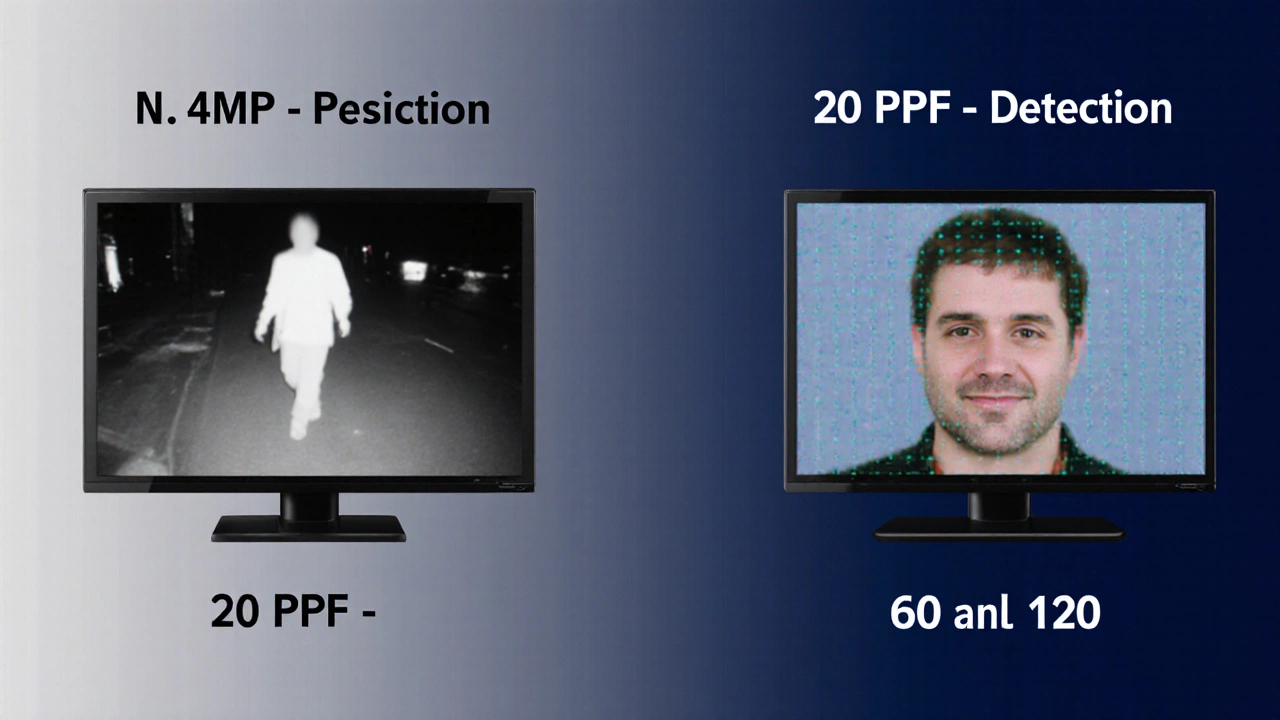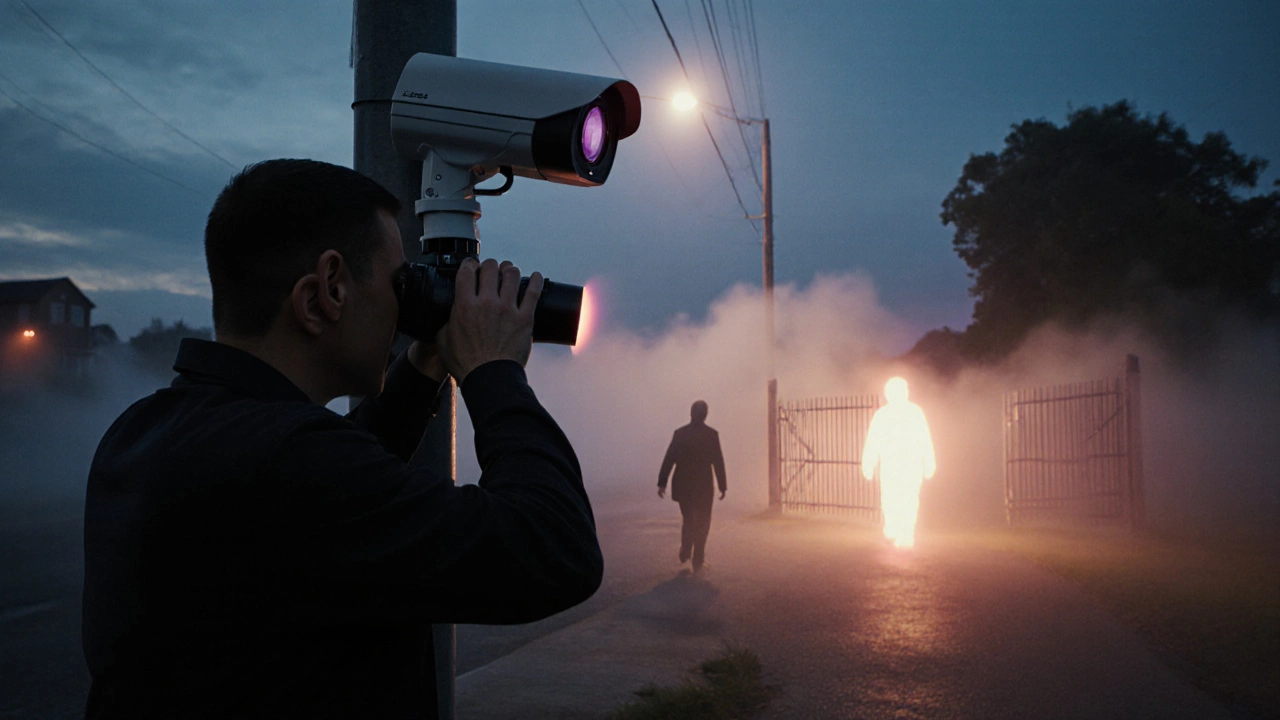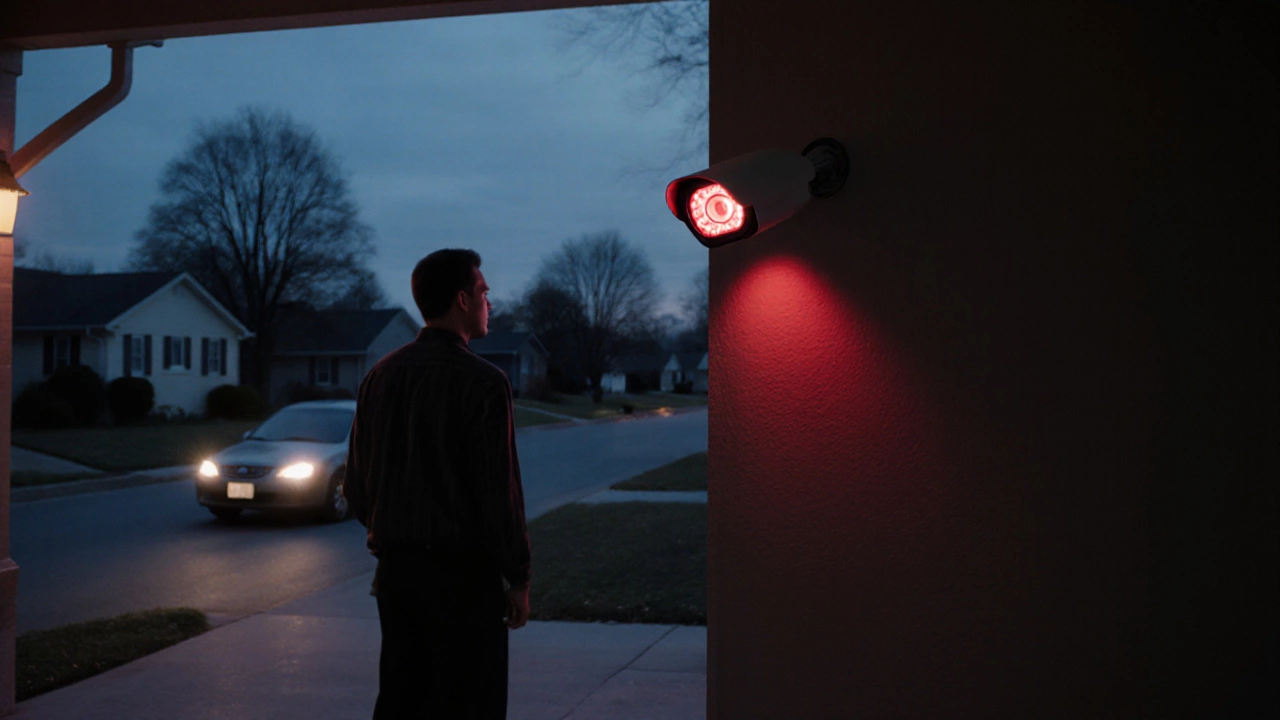CCTV Range Calculator
Calculate the actual distance where your CCTV camera can recognize faces based on resolution, lens focal length, and PPF requirements. Don't fall for misleading "1,000-foot" claims.
Results
Based on your camera's resolution and lens focal length, this is the maximum distance where you can recognize faces with this setup.
Tip: For better results, ensure proper installation: mount at 12-15 feet high, angled down 15-30 degrees, and use PoE wiring.
When you buy a CCTV camera, the box might say it can see up to 1,000 feet. But when you install it, you realize you can’t even make out a face at 150 feet. That’s not a defective camera-it’s a misunderstanding of what maximum distance really means. The real answer isn’t a single number. It’s a mix of resolution, lens quality, lighting, and what you’re actually trying to see.
What Does ‘Maximum Range’ Even Mean?
Most people think ‘range’ means how far the camera can detect motion. But that’s not enough. If you’re watching your driveway to catch a thief, you don’t just want to see a shape. You want to recognize a face. Identify a license plate. Know if it’s your neighbor or someone you don’t know. The security industry uses a standard called Pixels Per Foot (PPF) to measure this. It’s not about how far the camera can ‘see’-it’s about how many pixels land on each foot of the scene. Here’s what that actually looks like:- 20 PPF: Detection. You see a person or car is there. No details.
- 40 PPF: Classification. You can tell it’s a person, not a dog. Maybe even gender or clothing.
- 60 PPF: Recognition. You can identify a specific person’s face.
- 80+ PPF: Forensic quality. Used by law enforcement. Needed for court evidence.
Resolution and Lens: The Real Range Drivers
Two things control how far you can clearly see: resolution and lens focal length. A 4MP (1080p) camera with a 3.6mm lens? That’s common in home kits. It gives you:- Recognition at 22 feet
- Classification at 35 feet
- Detection at 70 feet
- Recognition at 120 feet
- Classification at 180 feet
- Detection at 360 feet
Night Vision: The Hidden Limit
Daytime range means nothing if your camera can’t see at night. Most budget cameras have infrared (IR) LEDs that light up the scene. But IR has limits. Standard IR: 30-50 feet. You’ll see a blurry shape, maybe a car. Not a face. Better models like the Reolink RLC-823A use more powerful IR and better sensors. They hit 100-190 feet at night. That’s the upper limit for consumer gear. Why? FCC rules cap IR power at 1 watt for home devices. No exceptions. Thermal cameras break this rule. They don’t need visible light. They detect heat. So they can spot a person at 1,000+ feet. But they can’t show facial details. They’re for detection, not recognition. Used by warehouses, farms, and military. Not for your front porch.
Camera Types and Their Real Limits
Not all cameras are built the same. Here’s what you can actually expect from each type:- Fisheye cameras: Great for 360° coverage. Useless beyond 15-20 feet. Everything’s distorted.
- Fixed-lens bullet/turret: Best for 70-80 feet in daylight. Night range drops to 50-60 feet.
- PTZ cameras: Pan, tilt, zoom. Can reach 200+ feet at night. You manually aim them. Good for large properties.
- Long-range PTZ (like The Beacon 8.0): 1,200-1,500 feet detection. Only for commercial use. Costs $4,800+. Needs professional mounting.
What You Can Actually See: Real User Results
Reddit users and Amazon reviewers report real-world results:- One user with a Reolink RLC-823A got clear license plates at 165 feet.
- Another confirmed facial recognition at 150 feet on a 4K camera with varifocal lens.
- But 62% of users who tried to use a 4MP camera for facial ID beyond 70 feet said it failed.
Installation Matters More Than Specs
Even the best camera fails if it’s installed wrong.- Mount height: 12-15 feet is ideal. Too low? You get too much ground. Too high? You lose detail on faces.
- Angle: 15-30 degrees downward gives you the best horizontal coverage.
- Focus: 78% of long-range failures are from poor focus. Zoom all the way in, then fine-tune manually.
- Network: 4K video needs 100Mbps Ethernet. Wi-Fi? Forget it. Use PoE++ (802.3bt) for power and data over one cable.

What’s Next? AI and the Future of Range
New tech is pushing boundaries. Hikvision’s DeepinView uses AI to digitally zoom without losing detail. It claims 40% more recognition range than optical zoom alone. That means a camera that sees 120 feet optically might now identify faces at 170 feet. In 2027, multi-sensor systems combining thermal, visible light, and radar could hit 2,000 feet. But even then, atmospheric distortion-the wobble of air over distance-will always limit clarity. For now, the best advice is simple: don’t chase numbers. Chase results.- If you need to recognize faces at your gate: get an 8MP camera with a 12mm lens.
- If you just want to see if someone’s at your door: a 4MP with 3.6mm lens is fine.
- If you’re monitoring a 1,000-foot perimeter: hire a pro and get thermal PTZ.
FAQ
Can a wireless CCTV camera work over 500 feet away from the router?
Wireless CCTV cameras don’t connect to your home Wi-Fi for video transmission. They send data to a local NVR (network video recorder) via a dedicated wireless link, usually within 300 feet. Beyond that, signal degrades. For distances over 500 feet, use wired PoE cameras or a mesh network with outdoor access points. Don’t rely on consumer Wi-Fi extenders-they add lag and drop frames.
Does higher resolution always mean longer range?
No. Resolution helps, but only if paired with the right lens. A 16MP camera with a 2.8mm lens will give you the same recognition range as a 4MP camera with the same lens-just a bigger, blurrier image. You need both high resolution and a long focal length (like 8mm or higher) to extend recognition distance. A 4K camera with a 12mm lens beats a 1080p camera with a 3.6mm lens by 5x in recognition range.
Why can’t I see faces at 100 feet even with a 4K camera?
Most likely, your lens is too wide. A 3.6mm or 4mm lens is designed for close-up views. At 100 feet, a person takes up only 2-3 pixels across. Even 4K can’t fix that. Switch to a varifocal lens and zoom in to 8-12mm. Also check focus: if the camera isn’t sharply focused at maximum zoom, faces will be blurry. Use the camera’s manual focus tool, zoom all the way in, and adjust until the face is crisp.
Do I need a PTZ camera for long-range surveillance?
Not always. For a fixed view-like your driveway or front gate-a fixed-lens 8MP camera with a 12mm lens works fine. PTZ cameras are for when you need to track movement or cover multiple areas. If you’re watching a 200-foot perimeter and want to zoom in on a car that drives by, PTZ is worth it. But if you just want to monitor one spot, skip the PTZ. They’re more expensive, slower to respond, and have more moving parts that can fail.
Can I use a CCTV camera to monitor my neighbor’s yard?
Legally, it depends on your location. In Australia, under the Privacy Act, you can’t point a camera at someone else’s private property without consent if it captures areas where they expect privacy-like backyards, windows, or pools. Even if the camera is on your property, if it’s clearly trained on your neighbor’s house, you could be violating privacy laws. Always aim your camera to cover your own property only. If you’re unsure, consult your local council or legal advisor.
What to Do Next
If you’re buying a camera for home use:- Decide what you need to see: motion, people, or faces?
- Choose 8MP (4K) resolution-no exceptions.
- Select a varifocal lens (7-35mm) so you can adjust zoom later.
- Ensure night vision hits at least 100 feet (check specs for IR range).
- Use PoE wiring, not Wi-Fi.
- Mount at 12-15 feet, angled down 20 degrees.

